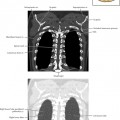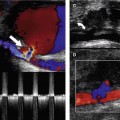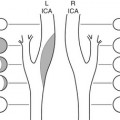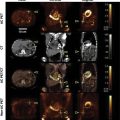Thyroid eye disease (TED) is an autoimmune disorder of the eyes commonly associated with thyroid dysfunction. Identifying the symptoms early can avoid complications and improve outcomes. In this post, we will discuss the symptoms, risk factors, and treatment options for this condition to raise awareness and get treatment as soon as possible.
What Is Thyroid Eye Disease?
TED (thyroid eye disease), also called Graves’ ophthalmopathy, mainly affects the tissue around the eyes. It is a common finding in Graves’ disease, an autoimmune thyroid disease. But it can also happen without any thyroid condition. The immune system mistakenly targets healthy tissue, which leads into inflammation and other eye-related issues. Knowing this disease can promote better TED symptom management and quality of life.
Identifying Early Symptoms
If TED is diagnosed early, it significantly impacts the course of treatment. Often, the eye experiences redness, irritation, and swelling first. Some patients experience watery eyes or a foreign body sensation, like sand in the eye. It’s important to know this because these symptoms can often be mistaken for something “less serious,” like allergies or other common eye issues.
Later on, the changes become more evident. This could lead to a condition known as eyelid retraction, where eyelids get pulled back, exposing more of the surface of the eye than usual. It can also result in bulging eyes, or proptosis, giving the face a characteristic appearance. Some patients may also experience double vision or difficulty moving their eyes. Being aware of it ensures that we get the treatment on time and may even avoid terrible side effects.
Identifying Risk Factors
Some people are more likely to get TED than others. There is a higher risk for those who have an autoimmune thyroid issue, like Graves’ disease. When it comes to smoking, this is a huge factor, as nicotine enhances inflammation and makes the treatment less effective. Also, women are affected more often than men, but the reason is unknown.
However, genetic predisposition may play a role in the development of TED. People with a family history of autoimmune diseases should stay alert for early symptoms. By knowing these risk factors, people can take preventive measures, such as getting an eye exam regularly and seeing a doctor immediately if any symptoms appear.
Getting the Right Treatment
TED treatment centers on symptom relief and reduction of inflammation. In the beginning, dry eyes and irritation may be helped by artificial tears or lubricating eye drops. Sometimes doctors may even prescribe drugs to shrink the swelling and calm your immune response. Corticosteroids, for example, reduce inflammation very well but can cause side effects when used for too long.
In such patients, severe symptoms may require surgical treatment. Surgery to straighten the eyes and remove the pressure on the optic nerve are two surgical option. Surgery on the eyelids may also help correct retraction and may improve both function and appearance. Seeing an eye specialist guarantees the best treatment course for each individual.
Mental Hygiene and Lifestyle Changes
These can help enhance medical care and improve quality of life. Still, one of the most effective solutions to reduce the severity of TED is quitting smoking. For the smokers out there: Find resources and support to quit. A healthy diet high in anti-inflammatory antioxidants and omega-3 fatty acids might also play a role in reducing inflammation.
Stress management, similar to various techniques like mindfulness or yoga, will help overall health. Get enough sleep and exercise, which promote wellness and support immunity. When your eyes are sensitive, you can also wear sunglasses outside to protect them from the wind and sunlight.
Monitor Regularly
Eye exams are a key step in treating TED. Regular check-ups are an adequate practice, as doctors can check the level of disease advancement and repeat the treatment process as needed. Prompt reporting of any vision change or new symptom could avert complications.
Working with a healthcare team of endocrinologists and ophthalmologists provides a comprehensive care plan. Patients are encouraged to be open about their situation, to participate in treatment, and to actively decide and lead the way on how to manage their condition.
Final Thoughts
Recognizing the warning signs of thyroid eye disease and the associated risk factors enables good clinical practice and allows early medical intervention if needed, avoiding severe consequences. Symptom identification, awareness of risk factors, and treatment options all play a role in effective management. However, with healthy lifestyle choices and regular eye exams, people can live well with this challenging condition. Improving education about TED will create better outcomes for affected people.
Stay updated, free articles. Join our Telegram channel

Full access? Get Clinical Tree







